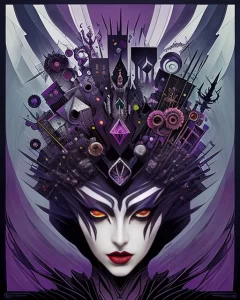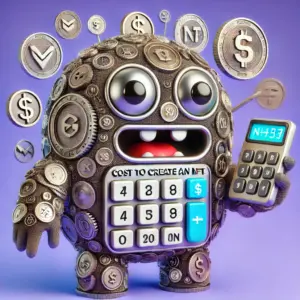The world of gaming has undergone a significant transformation in recent years, with the emergence of a new breed of games built upon the foundation of blockchain technology. These NFT games, as they are called, are revolutionizing the industry by introducing concepts like digital ownership and play-to-earn economies.
But what exactly is an NFT game, and how does it differ from traditional gaming experiences? This comprehensive guide delves into the intricate world of NFT games, exploring their core mechanics, economic models, potential benefits and drawbacks, and the future landscape of this dynamic field.
Understanding the Building Blocks: NFTs and Blockchain
Before we dive into the specifics of NFT games, it’s crucial to understand two key concepts: NFTs (Non-Fungible Tokens) and blockchain.
- NFTs: Imagine unique digital collectibles like artwork, music, or even in-game items. These collectibles are represented by NFTs, which are essentially digital certificates of ownership stored on a blockchain. This secure and transparent ledger ensures the authenticity and scarcity of each NFT, making them one-of-a-kind and verifiable.
- Blockchain: Think of a blockchain as a public, distributed ledger that records transactions in a secure and tamper-proof manner. Each transaction is added as a “block” to the chain, creating an unalterable record that anyone can access and verify. This technology plays a vital role in facilitating secure ownership and trading of NFTs within the gaming ecosystem.
The NFT Game Revolution: How Does it Work?
Now that we have a grasp of the fundamental building blocks, let’s explore how they come together in the world of NFT games. Here’s a breakdown of the core mechanics:
1. In-game assets as NFTs: Unlike traditional games where in-game items are owned by the game developer, NFT games leverage blockchain technology to represent these items as NFTs. This means players can truly own their virtual assets, including characters, weapons, armor, land parcels, and even unique cosmetic items.
2. Play-to-earn potential: One of the most intriguing aspects of NFT games is the play-to-earn model. By actively participating in the game world, players can earn rewards in the form of native game tokens or cryptocurrencies. These tokens can be used within the game for various purposes, such as purchasing new NFT items, upgrading existing ones, or even trading them on external marketplaces for real-world value.
3. Diverse gameplay experiences: NFT games encompass a wide range of genres, from role-playing games (RPGs) and strategy games to collectible card games and even virtual worlds. This diversity ensures that there’s a game out there to cater to the preferences of every gamer, regardless of their interests.
4. Community ownership and governance: Some NFT games implement decentralized autonomous organizations (DAOs), empowering players to participate in decision-making processes within the game’s ecosystem. This allows players to have a say in the game’s development and future direction, fostering a sense of community ownership and engagement.
Exploring the Economic Landscape: Benefits and Drawbacks
The introduction of NFT games has sparked debates and discussions regarding their potential benefits and drawbacks. Here’s a balanced perspective to consider:
Benefits:
True ownership of digital assets: Players have verifiable ownership and control over their in-game assets, enabling them to trade, sell, or rent them as they see fit.
Play-to-earn opportunities: Players can potentially earn real-world value through their gameplay and participation in the game’s economy. This opens doors for new avenues of monetization and income generation.
Increased engagement and community building: The ownership aspect combined with play-to-earn mechanics can foster deeper engagement and a stronger sense of community within the game world.
Potential for innovation and creativity: The integration of blockchain technology opens doors for innovative game design and new economic models within the gaming industry.
Drawbacks:
Market volatility and uncertainty: The value of NFTs and game tokens can be highly volatile, leading to potential financial risks for players.
Entry barriers and technical complexity: The initial investment required to purchase NFTs and navigate the world of cryptocurrency can be a barrier for some players. The technical complexity of blockchain technology might also pose a challenge for less tech-savvy individuals.
Sustainability and long-term viability: The long-term sustainability and viability of play-to-earn models remain under debate, with concerns surrounding potential exploitation and market saturation.
Environmental impact: The energy consumption associated with some blockchain technologies raises concerns about the environmental impact of NFT games.
The Future of NFT Games: A Glimpse into the Evolving Landscape
of this nascent technology holds immense potential for the gaming industry. Here are some key trends and possibilities to consider:
1. Integration with established gaming platforms: As the technology matures and its benefits become more widely recognized, we might see established gaming platforms like Steam or the Epic Games Store incorporating NFT functionalities into their ecosystems. This would broaden the reach of NFT games and potentially attract a larger mainstream audience.
2. Evolution of play-to-earn models: The play-to-earn model is bound to evolve, addressing concerns about sustainability and potential exploitation. We might see the emergence of more balanced models that prioritize sustainable gameplay experiences alongside earning opportunities. This could involve integrating elements like skill-based rewards, community governance, and long-term value creation through in-game activities.
3. Focus on interoperability and the metaverse: Interoperability, allowing players to use their NFT assets across different games and metaverses, is another exciting potential development. This could create a truly interconnected virtual world where players can seamlessly carry their digital belongings and experiences from one platform to another.
4. Increased focus on user experience and accessibility: As NFT games target broader audiences, developers will need to prioritize user-friendly interfaces and educational resources to ensure smooth onboarding experiences for new players. Addressing the technical complexity of the underlying technology and lowering entry barriers will be crucial for widespread adoption.
5. Regulation and ethical considerations: Regulatory frameworks are likely to emerge to address concerns regarding financial risks, consumer protection, and potential manipulation within the NFT gaming space. Open communication and collaboration between developers, regulators, and players will be key to establishing ethical and sustainable practices in the long run.
Conclusion
The world of NFT games is a dynamic and ever-evolving landscape with immense potential to reshape the gaming industry. While challenges remain, the opportunities for innovation, ownership, and community building are undeniable. As the technology matures and stakeholders come together to address the existing limitations, NFT games have the potential to become a mainstream phenomenon, creating a future where players are not just consumers, but true owners and active participants within the game worlds they inhabit.






